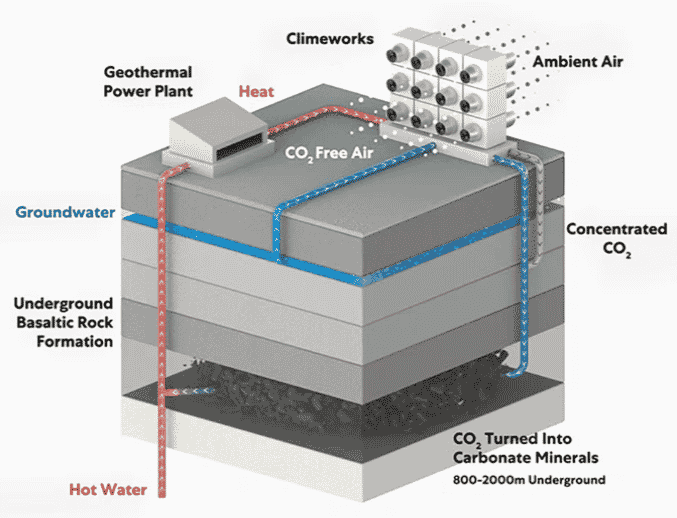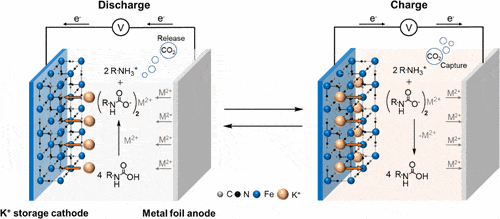As the fight against climate change intensifies, technologies for capturing carbon dioxide (CO2) are gaining traction. These technologies are critical not just for reducing greenhouse gasses but also for generating carbon credits.
Among those technologies, Direct Air Capture (DAC) has been the go-to option for some time. However, new electrochemical methods are showing promise, offering a more energy-efficient way to capture CO2. This article compares these two methods in layman’s terms.
Direct Air Capture: The Tried and True Method
Direct Air Capture is like a massive vacuum cleaner for the atmosphere. It sucks in the air and filters out CO2. It’s versatile because you can place it almost anywhere.


However, there are some caveats in using DAC.
First, DAC operates best when there’s a lot of heat available. This heat helps to attract and then release the trapped CO2. Think of it as needing a hot stove to cook your food. Without heat, the process slows down or becomes inefficient.
Second, DAC targets CO2 in the open air, where it’s quite diluted. It’s like fishing in an ocean for just a few specific fish. You’ll need to sift through a lot of water to find what you’re looking for. This makes the process energy-intensive and often expensive.
Lastly, while you can power DAC systems with renewable energy, they are not inherently designed to work best with it. It’s like having a gas car that you’re trying to run on electricity; it works but not optimally.
Electrochemical Methods: A More Efficient Way of Capturing CO2
Enter the electrochemical methods. These methods are more like fishing in a stocked pond rather than an ocean. They are designed for environments where CO2 is abundant, such as industrial factories with heavy emissions like concrete and steel.
Because of this, they can capture CO2 more efficiently. One of the biggest advantages is that these methods use electricity instead of heat. Electricity is easier to source from renewable options like solar or wind power. It’s like having an electric car that’s designed to run on clean energy; it’s a better match.
Another plus is that these methods work well at room temperature. No need for the “hot stove” that DAC requires. This feature makes the process more energy-efficient and potentially cheaper in the long run.
Lastly, the electrochemical methods use special liquids that can hold more CO2. Imagine a fishing net that can catch and hold more fish at once. This makes the process even more efficient.
A team of researchers reporting in ACS Central Science have designed a carbon capture system using an electrochemical method. The device they develop uses electrochemical cells that can easily grab and release carbon dioxide. It operates at room temperature and needs less energy than conventional DAC systems.
The “Swinging” Electrochemical Process
The researchers first developed an electrochemical cell that catches and releases CO2 by “swinging” positively charged cations across a liquid mixture.


The process is like a seesaw wherein if the cell is discharged (or “up”), it releases the CO2 and forms a compound (carbamate amine). If the cell is charged (or “down”), it captures CO2 and reforms the chemical compound (carbamic acid).
The scientists then optimized the ion-swinging process to make their electrochemical device work better. They used a mix of special ingredients (potassium and zinc ions) to power the device. This made their device perform competitively with other electrochemical cells in previous studies and use less energy than heat-based cells.
They tested the prototype cell many times, and it still worked well after many tries with a 95% sustained capacity rate. This shows that their electrochemical method is feasible and can offer a more practical carbon capture solution for industrial applications.
Carbon Capture and Carbon Credits
Companies operating in the heavy-emitting industries can leverage the newly developed electrochemical carbon capture technology.
If it’s tested to work efficiently in real-world applications as demonstrated during the study, the technology can help heavy emitters abate their carbon emissions. In return, they can generate carbon credits for removing certain amounts of CO2 directly captured from their facilities.
Currently, carbon capture companies like Climeworks and Carbon Engineering are attracting big corporate buyers of carbon credits. Each credit represents a tonne of carbon removed from the atmosphere via DAC technologies.
The same applies to any innovative methods so long that they can show their carbon capture capacity and scalability.
While DAC remains versatile but energy-intensive, electrochemical methods offer a promising, energy-efficient alternative with the potential to revolutionize carbon capture and drive the generation of carbon credits.
- SEO Powered Content & PR Distribution. Get Amplified Today.
- PlatoData.Network Vertical Generative Ai. Empower Yourself. Access Here.
- PlatoAiStream. Web3 Intelligence. Knowledge Amplified. Access Here.
- PlatoESG. Automotive / EVs, Carbon, CleanTech, Energy, Environment, Solar, Waste Management. Access Here.
- PlatoHealth. Biotech and Clinical Trials Intelligence. Access Here.
- ChartPrime. Elevate your Trading Game with ChartPrime. Access Here.
- BlockOffsets. Modernizing Environmental Offset Ownership. Access Here.
- Source: https://carboncredits.com/electrochemical-method-to-capture-carbon-more-efficient-than-dac/



